How to Enable or Disable Log On Users with Temporary Profiles in Windows?
The User Profile in Windows included all account settings like screen saver, desktop background, File Explorer options, and many other options. It also contains folders such as Contacts, Desktop, Downloads, Favorites, Music, Videos, Pictures, etc. Whenever a user profile is corrupted and Windows cannot access the user profile folder, then Windows will sign in the user with a temporary profile by default. The data created in this temporary profile will be deleted when the user signs out. An administrator can disable the temporary profile creation on the employee’s computers. By doing this, the employees will ask the IT team about this issue rather than working in the temporary profile.
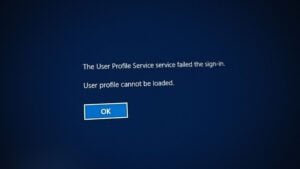
In this article, we will provide the methods through which you can easily disable the log-on with temporary profiles in Windows. We have also included the Registry Editor method for the Windows Home users that do not have access to the Group Policy Editor.
Method 1: Using the Local Group Policy Editor
The Group Policy Editor is a tool through which an administrator can manage settings for the operating system. It includes the specific policy through which you can disable the log-on with the temporary profiles feature. Unlike the Registry Editor, it is pretty simple to configure and there are no risks of wrong configurations. Follow the below steps and see how it works:
Note: The Group Policy Editor isn’t available for the Windows 10 Home users. If you are using the Windows 10 Home operating system, then skip this method.
- Open the Run dialog box by pressing the Windows and R keys together on your keyboard. Then, type “gpedit.msc” and press the Enter key to open the Local Group Policy Editor window.
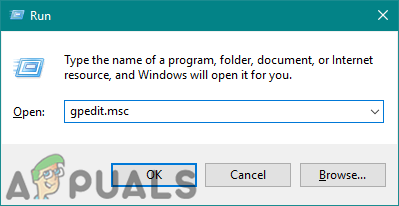
Opening the Group Policy Editor - In the Local Group Policy Editor window, navigate to the following location:
Computer Configuration\Administrative Templates\System\User Profiles\
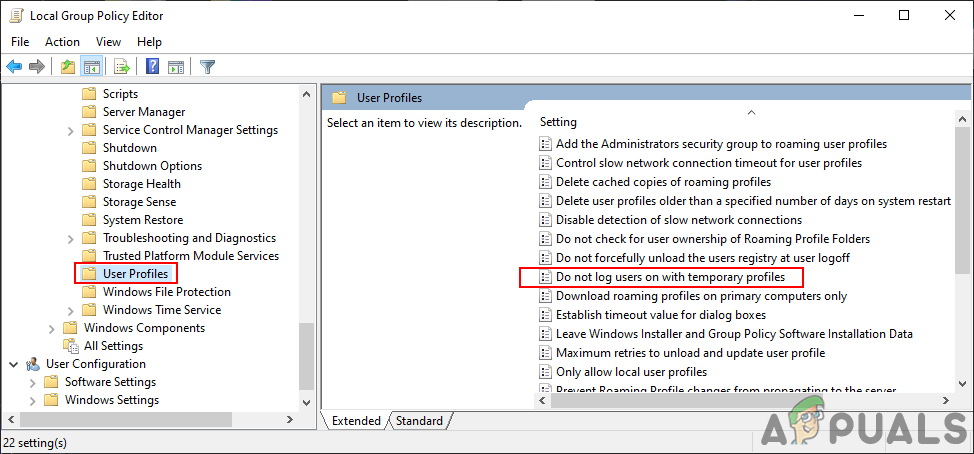
Navigating to the setting - Double-click on the setting named “Do not log users on with temporary profiles” and it will open in another window. Now you can change the toggle option from Not Configured to Enabled.
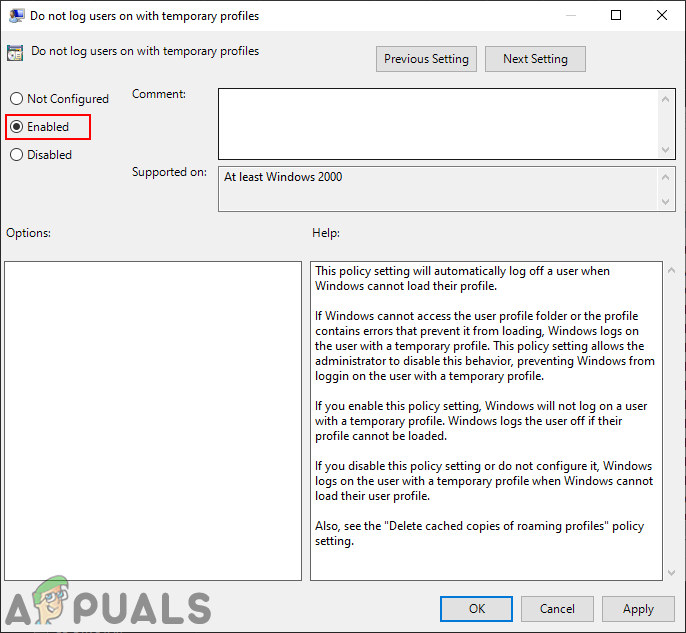
Enabling the setting - Click on the Apply button and then the Ok button to save the changes.
- The group policy will automatically update the settings on your system. However, if it doesn’t update, then open the Command Prompt as an administrator.
- Now type the following command in Command Prompt (Admin) to force an update for the policy that you configured. You can also update the group policy by restarting the system.
gpupdate /force
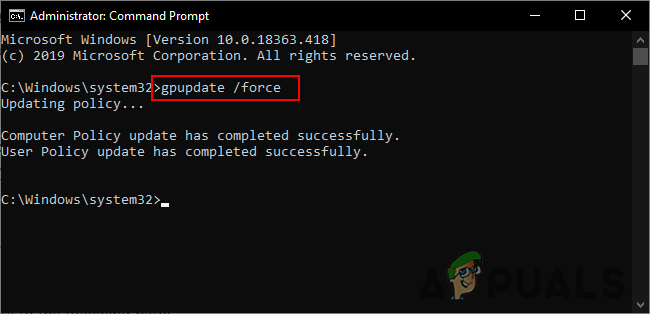
Updating the group policy - You can revert back this to the default setting by changing the toggle option to Not Configured or Disabled in step 3.
Method 2: Using the Registry Editor
The Windows Registry contains all the information and settings used by the operating system and applications. This is the alternative method for disabling the temporary profiles feature. It is also the only available method for Windows 10 Home users. This is a bit technical method compared to the Group Policy Editor. Sometimes the user needs to create the missing key or value for the specific setting. Follow the below steps for Registry Editor configuration:
- Open the Run dialog box by pressing the Windows + R key together.
- Now type “regedit” in the box and press the Enter key to open the Registry Editor.
Note: If prompted by the UAC (User Account Control) window, click on the Yes button.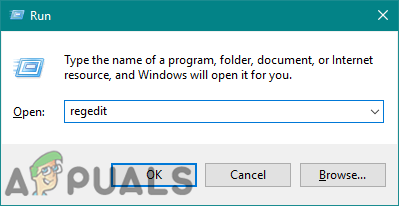
Opening the Registry Editor - If you want to create a registry backup, click on the File menu and then choose the Export option from the list. Now name the file and provide the path where you want to save it, then click on the Save button.
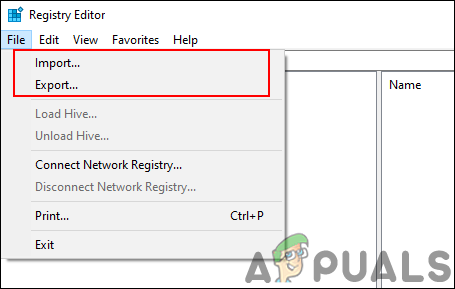
Creating the registry backup Note: To recover the registry, click on the File menu and choose the Import option from the list. Select the backup file that you previously created.
- Navigate to the following path in the Registry Editor window:
HKEY_LOCAL_MACHINE\SOFTWARE\Policies\Microsoft\Windows\System
Note: If the System key is missing, right-click on the Windows key, and choose the New > Key option. Rename the key as “System“.
- In the right pane of the System key, right-click and choose the New > DWORD (32-bit) Value option. Rename this value as “ProfileErrorAction“.
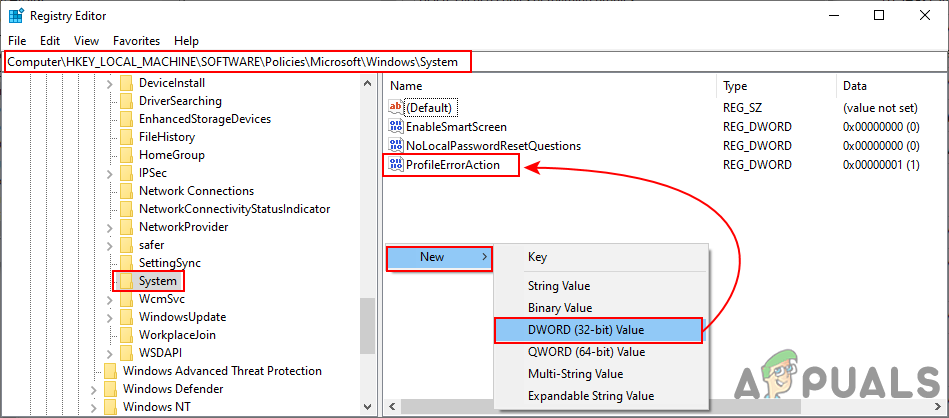
Creating a new value - Double-click on the value to edit it. Now change the value data to 1 to enable the value. Enabling the value will stop users to log in with temporary profiles.
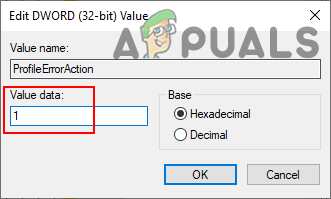
Changing the value data - Once the changes are made, make sure to restart the system to apply these changes.
- You can revert back to default settings by removing the newly created value from Registry.





